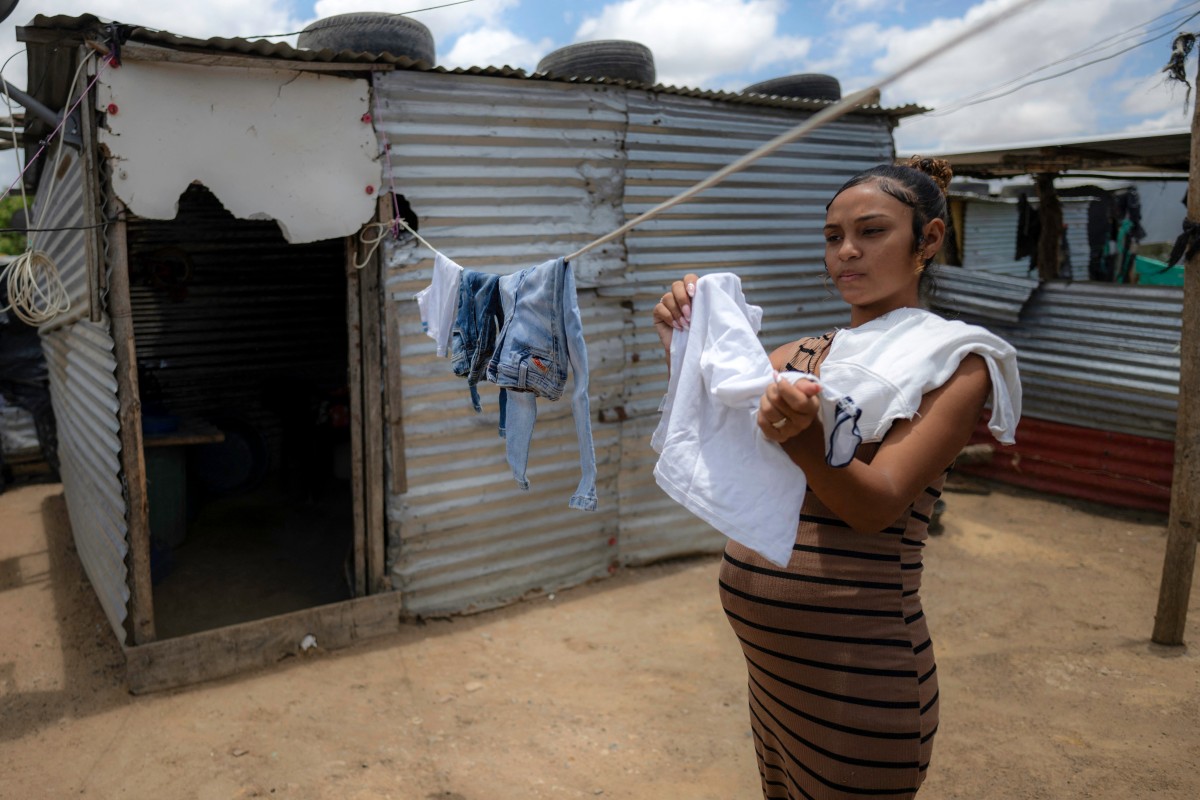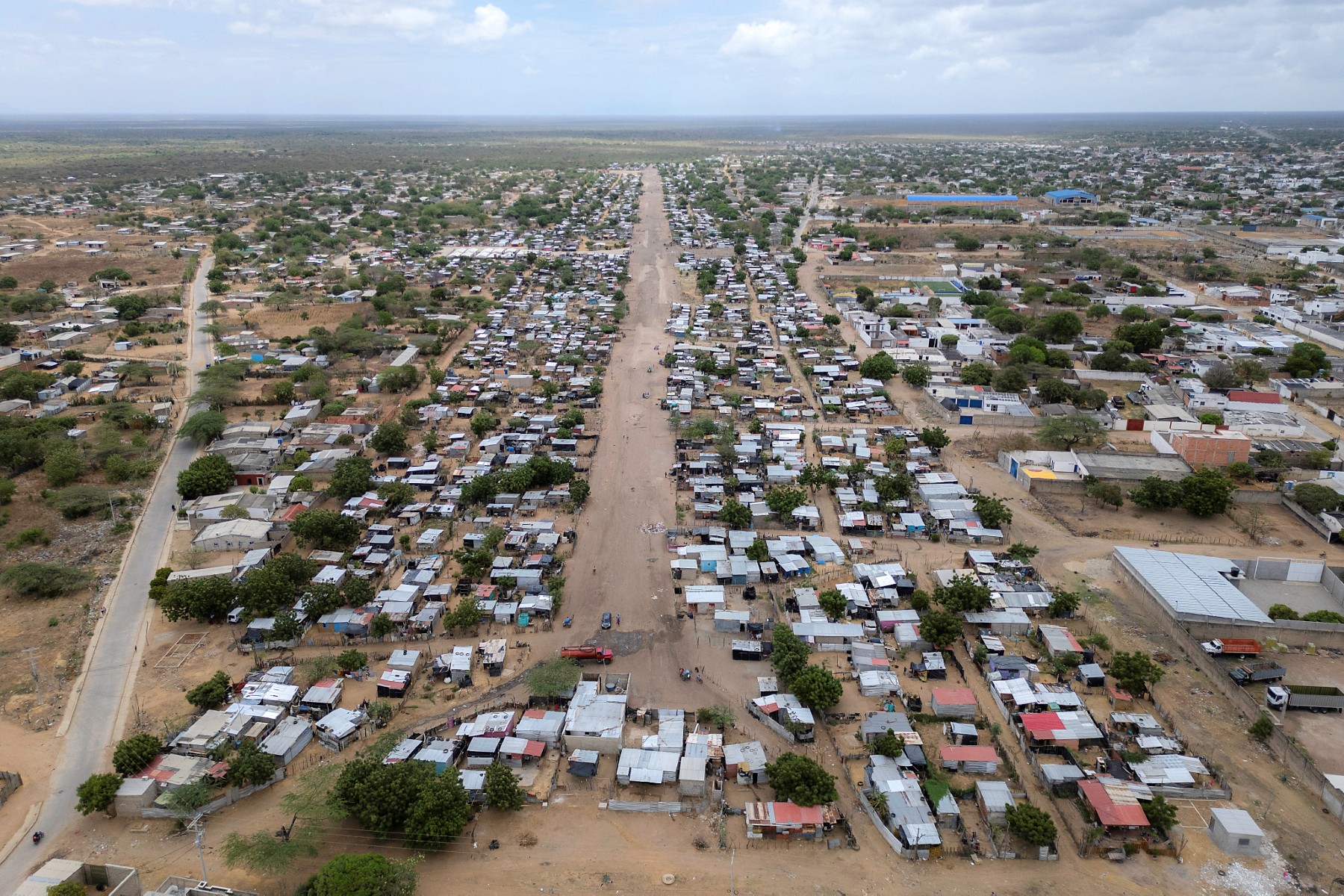
By Agence France-Presse
For residents of Colombia’s largest migrant camp, an already tough life is getting tougher thanks to Donald Trump’s aid cuts.
Eight months pregnant and 20 years old, Astrid lives on an abandoned, dust-blown airstrip in Colombia’s Guajira desert. Her house is a lean-to shack, cobbled together from tin sheets and lumber.
It is not much, but it protects her and her five-year-old son—who is paralyzed with encephalopathy—from the blistering equatorial sun.
“What do I lack? Everything,” the Venezuelan single mother tells AFP. “Nothing here is mine.”
Like many of the 10,000-14,000 residents in the La Pista migrant camp, Astrid fled nearby Venezuela, where poverty, hardship, and organized crime are endemic.
Without running water, a bathroom, or even money to attend prenatal checkups, Astrid dreams of working and giving her children “a home.” But in La Pista, malnutrition is common and many depend on aid handouts to survive.
Since Trump returned as U.S. President in January, cuts to aid arm United States Agency for International Development (USAID) have been keenly felt in this ad hoc settlement, where children skip barefoot past dogs and cows rummaging in the garbage for food.
Trump and his cost-cutting sidekick Elon Musk have argued that the U.S. federal budget is bloated, that spending is unsustainable and that Americans, not foreigners, should benefit from any taxpayer largesse.
USAID was effectively shuttered and its annual budget of close to $43 billion—providing more than 40 percent of the world’s humanitarian aid—was decimated.
Local mayor Miguel Aragon said the U.S. cuts felt like “a cold bucket of water.” Of the 28 non-governmental groups that existed in the area last year, only three remain today, he said.
“Today we feel alone,” says the 37-year-old politician, who fears disaster is on the way.

‘Rice with cheese’
Inside a local medical center, several women with babies wait to be attended to.
Luz Marina, a 40-year-old Colombian, is there with her five-year-old son, who is underweight. She has experienced U.S. politics firsthand. Earlier this year, she was chosen to receive aid, only to be told it was cancelled due to decisions in Washington.
“I didn’t get to receive anything,” she says through tears. “It’s so sad; it was something I truly needed.”
With the help of nutritional supplements, Luz Marina’s son had managed to gain some weight. But that progress is now at risk due to a lack of food.
“It’s not the same to eat rice with chicken as it is to eat rice with cheese,” she told AFP.
Humanitarian groups have tried to alleviate some of the hardships, and the Colombian state provides potable water once a week to households. But even rich Western aid groups are also feeling the pain of U.S. spending cuts.
At a local school, until recently kids played instruments, sang lively tunes, and took workshops. But the Save the Children-run project closed after the cuts reduced its Colombia budget by 40 percent.
Country director Maria Mercedes Lievano fears that the closure of such projects will create a “greater risk of people entering criminal groups.”
“Having to turn our backs on the people we were supporting is very difficult,” Lievano says, her voice choking. “It hurts a lot.
